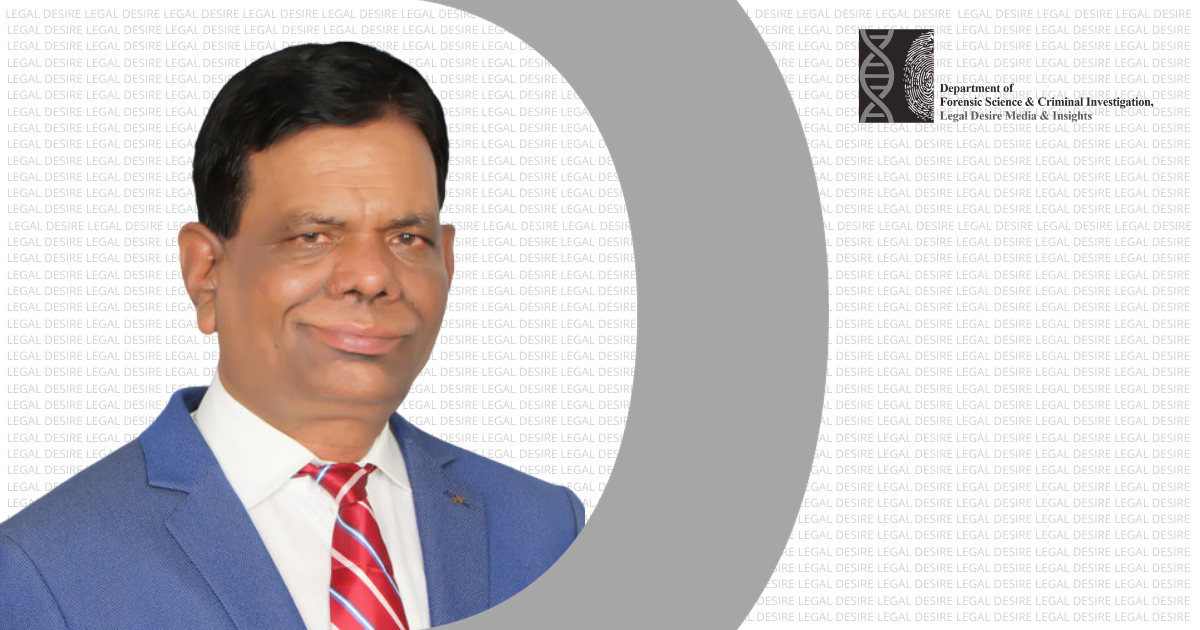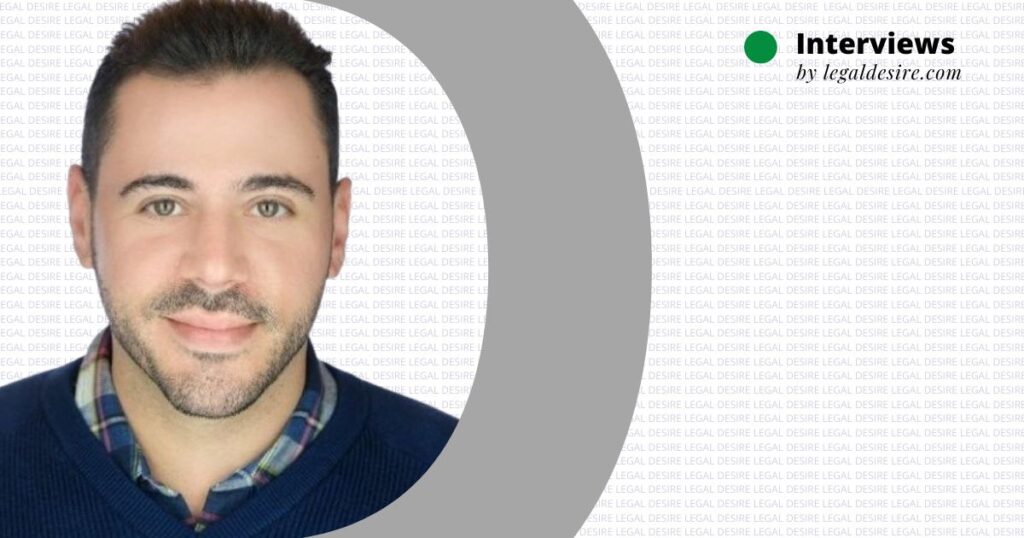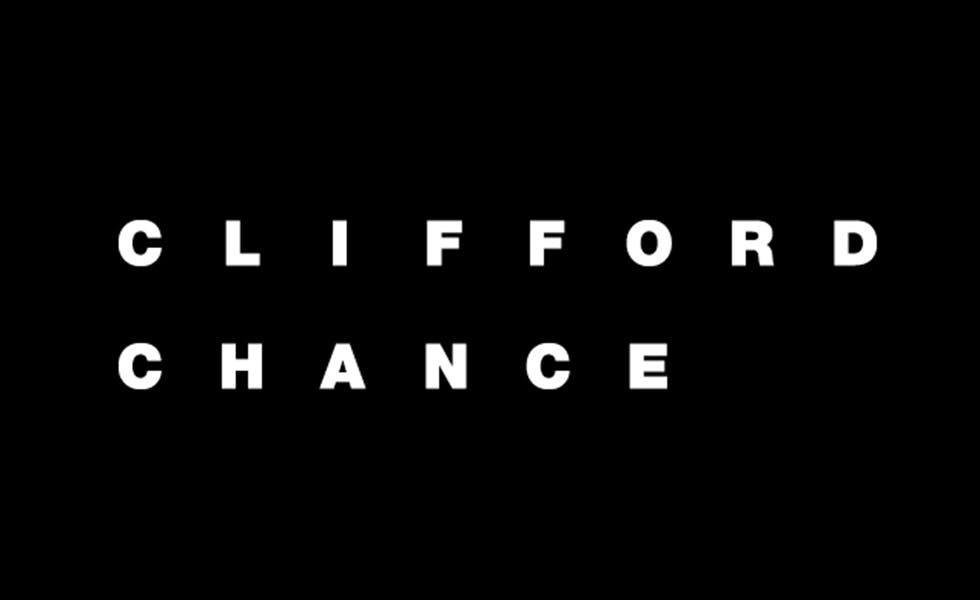Now Reading: In Conversation with Dr. Krishna Vishwanathrao Kulkarni, Rtd. Director, Forensic Science Laboratory, Mumbai, Maharashtra
-
01
In Conversation with Dr. Krishna Vishwanathrao Kulkarni, Rtd. Director, Forensic Science Laboratory, Mumbai, Maharashtra

In Conversation with Dr. Krishna Vishwanathrao Kulkarni, Rtd. Director, Forensic Science Laboratory, Mumbai, Maharashtra
Dr. Krishna Vishwanathrao Kulkarni is an ex-directorate of Forensic Science Laboratory, Mumbai Department, Home Department. His academics qualification includes Ph.D. (chemistry), Department of Chemistry, Dr. Babasaheb Ambedkar Marathwada University Aurangabad, M.Sc. (Medical Biochemistry), (Govt. Medical College, Aurangabad,), Dr. Babasaheb Ambedkar Marathwada University Aurangabad, D.M.L.T. (P.G. Diploma),(Govt. Medical College, Aurangabad), Dr. Babasaheb Ambedkar Marathwada University Aurangabad, A.D.C.S.S.A.A. (P.G. Computer Diploma)- (Govt. Polytechnic College, Aurangabad), Govt. Technical Board, Mumbai.
His major experiences include ex-Director; Directorate of Forensic Science Laboratory, Home Department, Government of Maharashtra, Mumbai, before that he was deputy director, Directorate of Forensic Science Laboratory, Home Department, Government of Maharashtra, Mumbai, India, and Regional Forensic Science
Aurangabad and Pune, Regional Forensic Science Laboratory, Aurangabad.
The books published by him include ‘Identification of pesticide and Drugs of Forensic Interest’ Krishna V. Kulkarni, Dhananjay V. Mane, ‘Identification of pesticide and drugs of forensic interest by using modern analytical method’ Krishna V. Kulkarni, Dhananjay V. Mane, Chapter is Published in “Insecticides/Book 3”
He was the head of several research projects such as ‘Study of certain enzyme and lipid profile in acute myocardial infarction’ which was completed in Govt. Medical College & Hospital Aurangabad and submitted to Dr. B.A.M. University, Aurangabad. Second major project was ‘Computerizations of Forensic Science laboratories by using Fox-pro’ which was completed in Govt. Polytechnic, Aurangabad and submitted to Maharashtra Board of Technical Education, Mumbai and another Research Project on ‘Identification on Pesticide & Drug of Forensic’ interest by using Modern Analytical Method was accepted by Dr. Babasaheb Ambedkar Marathwada University Aurangabad for Award of Ph.D. Degree in Chemistry. He has done trading in forensic sciences at renowned institutes such as National Gel Technology Workshop-Organized by Medical College, Nagpur, National Seminar & Workshop on Recent Advances in Forensic Science and Forensic Medicine-Organized by High Court Legal Services Committee, DFSL New Delhi and FSL Mumbai. He has been Committee Member at National level Forensic Science and Appointed as a Chairman, Toxicology Manual Preparation committee, All India level by Ministry of Home Affair, New Delhi. He has been a Member of Advisory Committee -Govt. Institute of Forensic Science, Aurangabad. He was the President of the Technical Committee of All Govt. Forensic Institute in Maharashtra G.R.- Higher & Technical Education Dept. Purchase comm. He was the Member of Board of Study in Forensic Science – Dr. Dr. Babasaheb. Ambedkar Marathwada. University Aurangabad, Member of Board of Study in Forensic Science – Mumbai University and Subject Expert for conducting Interview for admission to Ph.D. Forensic Science.
What inspired you to join the Forensic domain during those early days, when there wasn’t much awareness about Forensics in the country? How do you feel about your decision now?
I have completed my education in Govt. Medical College Aurangabad, Maharashtra M. Sc. Medical Biochemistry and Postgraduate Diploma in Medical Laboratory Technology. After that I worked in government medical college. By that time, I developed interest in forensic Science through various cases solved by forensic Science lab send by our college and reading interesting cases in Science Direct magazine. I applied for the post of Scientific Officer in forensic lab and fortunately with my efforts I could sail through it and started my career in forensic. Today I feel very completed and satisfied about the work I have done till now and even wanted to pursue further life in same field too.
Were there any instances, when you were called for inspecting the crime scenes by the IO/Police Unit? How challenging was it to deal with it apart from the lab work?
Yes, there are many instances of crime scene. There were many high-profile cases too. One of the best crime scenes I faced was 26/11 in Mumbai, Mansi Deshpande case at Aurangabad and there is very long list, two important cases given below:
Murder and Rape of I.T. Professional in IT hub of Maharashtra Pune: Repeated cases of rape and murder in Maharashtra new IT hub Pune have become curse to a place with civilized and cultural history. The Modus operandi have become almost identical. The drives of tourist vehicles having criminal background spot the innocent young I.T. professionals offer them a lift on their way and do the heinous crime.
The present case also bears same history. The articles seized were undergarments of victim seat cover of the car used and duster cloth bearing stains. The DNA profiling of semen stains on seat cover and cloth was successfully performed. The control blood of one of the four accused was found to be matching with the semen stains.
Murder and Rape of incant teenager in developing city Aurangabad: Developing cities like Aurangabad are facing problem of increasing number of serious crimes. Above mentioned crime took place in sophisticated locality of Aurangabad city. The victim was innocent young girl. The accused who was habitual robber intruded in the flat, where the victim was staying with her brother. The brother had night shift hence the girl was alone. As the accused was stealing the valuables the girl woke up. The accused realized that the young girl was alone. He took the advantage of situation and raped her. To hide the first crime, he murdered her with sharp edged weapon. The investigating authority caught the accused on Suspicion. The vaginal aspirate of victim girl, the bed sheet at the crime scene and T-shirt of accused were attempted for DNA analysis. The DNA profile from semen stains on bed sheet and from vaginal aspirate matched with that the accused. Also, the DNA profile of blood of deceased girl was found to be matching with DNA profile of blood stains detected on T-shirt of accused.
What challenges were encountered while dealing with and processing the evidence submitted to the forensic lab by the police and various other government agencies during the early days when awareness about forensics was not much in the country?
Forensic examination needs details of exhibits and they must be in proper and intact position before examination. Because of this thing there were many challenges like:
- Lack of professional training to policeman who collect evidence directly through crime scene.
- Preservation of exhibits and evidences as cold storage and transport is a major issue.
After the lab examination of the case evidence, you might have been called in the court of law on many instances to testify about a particular case either from the Prosecutor’s/Defendant side. What challenges were encountered by you while giving your opinion in the court where the people lacked the scientific understanding about Forensics?
I have called in the court of law on many instances to testify about a particular case either from the Prosecutor’s/Defendant side. So many times, I have seen that not only people but also advocate from criminal side have lack of scientific knowledge. So many irrelevant questions are asked by them. So, information asymmetry was a major challenge. After that as we all know, court proceeding many times takes a lot time for giving final judgement. This duration sometimes can be challenge. Therefore, to minimise those challenges we started some initiative like one day training, providing basic forensic knowledge etc. to private advocate with the request of bar association. This resulted in positive manner as after that I noticed change in court proceedings.
You have supervised medico-legal cases. What are some of the legal issues in a medico-legal case where poisoning is involved? What are some of your recommendations for such cases?
In my career medico legal cases was one of the main issues in clinical forensic toxicology. Here I would like to tell one interesting case, in those one 25 years old male was given a bottle full of water to drink and challenged him to drink this water if he was really in love with the girl. The male consumed the same, after 20-30 min he started vomiting sensation and giddiness. He was admitted to the hospital, during medical treatment, medical officer had also sent stomach wash for chemical analysis, to decide the line of treatment.
After chemical analysis of stomach wash, it was found to contain (142) milligrams of Hydrochloric Acid per (100) grams. Thus, line of treatment was decided by medical officer and the person was survived. Our quick report system worked well here to save victim’s life.
Another one,
Suspected snake venom poisoning found Endosulphan poisoning: A male of 40 Years old was found dead near a well in the field. According to his wife, he might have died due to snake bite. After autopsy, viscera and skin patch from bite site were sent to this laboratory for chemical analysis. Organochloro insecticide Endosulfan (Thiodan) was detected in viscera. However, no snake venom detected in skin patch from questioned bite site. This provided a vital clue for investigation to I.O.
Third one, Metal poisoning case:
The forensic laboratory had received one of the homicidal cases in which the highly qualified girl and her boyfriend decided to get rid of from girl’s former boyfriend. For this they called the former boyfriend in a hotel where they offered some “Prasad of God” to him. After eating the “Prasad” the victim started vomiting and was admitted in the hospital. However, he could not respond to the treatment and died. Police registered this case as an accidental death. Medical Officer preserved the Post Mortem samples Viscera, blood, and stomach aspirate and directed investigating officer to submit it in the forensic laboratory for chemical examination.
Routine Toxicological examination showed absence of commonly used insecticides, drugs, in visceral samples.
Hence these samples were tested for the presence of metallic poisons, if any. Routine chemical tests revealed the presence of arsenic these samples.
It was further confirmed and quantitatively determined using EDXRF. With the information Pune police arrested the accused girl along with her purse in Jammu and submitted her purse.
Even after laps of few weeks the accused girl’s purse when examined showed the presence of “Arsenic” in the inside compartment. The viscera –I (stomach and contains), Viscera-II (Liver), contain 2.44 mg and 11.2 mg of arsenic per 100 gm, respectively. Thus, it directly linked the accused girl with the serious crime.
You have delivered lectures and trained Judicial Officers, Police officers, IOs, Medical Officers, and Forest & Railway officers. How different is it compared to working in the laboratory? And what are the challenges encountered by you?
The Police Officers and Judicial Officers are regularly trained to make the forensic services more effective. It is seen that the advantage of any innovative technology is first taken by criminals before other citizens, to combat such crime it is necessary for a forensic scientist to update himself in latest developments of science and technology. Therefore, constant efforts are made to train the scientific staff by way of workshops, seminars and giving them special trainings at various reputed institutes in the country or abroad, if necessary.
Working in the lab is totally different. There we need to analyse exhibits submitted by police and medical officers. As I have already told that, many times the sample collection method is not appropriate. That’s is one of the main reasons of such lectures. Here persuasion and expression is the key. I need to connect with them emotionally which is totally opposite from working in lab.
Most Forensic Laboratories are backlogged with old cases while new cases are accumulated on a daily basis. What is the reason behind this and what steps are or should be taken to tackle this issue in your opinion?
The biggest challenge I ever faced in my whole career is the pendency issue. The reasons behind this are,
Lack of manpower: onsite working staff is not optimum as rate of crimes is increasing day by day.
To tackle this issue, in my tenure I did some changes. In the year 2018-19 additional manpower on contract basis
was taken for disposal of cases and it’s served the purpose but it created legal issues for re-employment of the people on contract who demanded for their permanent absorption. In my opinion, Govt. needs to take a view on filling up these vacancies immediately on par like recruitment of police constables otherwise the pendency position will always keep adding-up.
Infrastructural issues: Grants as well modernise equipments are lacking. In my opinion, Govt. needs to consider giving grants for construction of offices/laboratories and residential quarters for the staff.
FSL Maharashtra was receiving 5 % grants from modernization funds of Maharashtra which needs to be enhanced to at least 20 % to cater to the costly instruments, equipment’s and infrastructure facilities, which are directly assisting police department only.
During your tenure 45 Mobile Forensic Support Units (MFSU) and 5 Mini Forensic Laboratories started functioning in different districts of Maharashtra. How demanding was this task of capacity building? How did you deal with the same?
Govt. of Maharashtra had provided 45 mobile forensic support units (MFGSU) in all district police units in Maharashtra in the year 2016. Detailed SOP regarding MFSU prepared by Directorate of Forensic Science Laboratories (DFSL) Mumbai was circulated to all police Units and supervisory Officers through Addl. DG CID Crime Pune.
Aim to start Mini RFSLs:
- Decentralization of Forensic Services.
- To reduce the pending cases in present DFSL & RFSLs.
- Immediate service to investigation agency.
- To reduce the time and expenses of investigation agency to deposit the cases in laboratory.
- To reduce time and distance of experts visiting crime scene.
- To reduce the office expenses for crime scene visit.
- To reduce the burden on existing FSLs.
Most of the professionals working at various FSLs are overburdened by the casework. But you managed to indulge in research work and published 100+ research papers in national & international journals despite all this. How did you make it possible and what challenges did you encounter while doing so?
Research is basically coming through practical experiences of working. In my case I was passionate about forensic studies and I excelled through it whenever I got the chance. Also, forensics is a growing scientific field as new researches are always possible. In free time after my working hours of office, I used to work on my papers and that’s why it reached 100 plus figures. It also helped me solve many criminal cases easily and helped me get positive prosecution.
Challenges are like – resources issue, unavailability of required quantity and quality of chemicals, lack of updated instruments and equipment. But I managed to solve those with the help of many private institutions and colleges.
Although, it was challenging to set up mobile forensic units as we were completely new in this field. In the starting phase, we encountered infrastructural bottlenecks, a lack of skilled workers and approval, and other administrative issues. But fortunately, we successfully dealt with all of them. Such a way to solve the issue of backlogs and pendency we took this step and today I can say that somehow it delivered justice to our main concern.
Do you collaborate on research projects with your colleagues at the lab? In your opinion, how important is it to do so?
Yes, many times. In my opinion research project effectively run with the help of colleagues from our laboratory because suggestion from every person is useful to minimise disadvantages and mistakes of our project. After completion of project, our institution should run our project more effectively. It also improves the work culture, so people are aware about new thing and newer method. So, in my opinion collaboration research work is more useful and beneficial to scientific community.
With new advancements in technologies every now and then, how well equipped are the Forensic labs? How does a good lab infrastructure help the investigation?
In today’s scenario, forensics labs in our country are modernized and well equipped, but as we all know, technology is always developing. So, further improvement in modernization like USA labs can be possible with collaboration. Good lab infrastructure works as a complementary to knowledge and hard work. It also improves time, processing efficiency, and efficacy with the help of adept effectiveness.
The Directorate of Forensic Science Laboratories of Maharashtra will get transformed into world class technological institute. Our vision is to make Forensic Science a powerful tool to provide quick and clinching evidence to the criminal justice delivery system by providing accurate forensic reports within a month. Diligent efforts, continuous research and utilization of modern scientific methods will lead us into becoming a premier institute in India.
Many trainings are being undertaken by the Directorate of Forensic Science Services (DFSS), New Delhi. How effective is it while working at the lab or crime scenes?
DFSS, New Delhi undertaking various training, which is more beneficial for newer compound analysis. In day to day there is fast advances in science and technology, to tackle with this problem the training organising by DFSS is very useful. To effectively tackle with newer research, my opening training is must.
Do you have a story to tell about an incredible case that you solved that you’re really proud of?
Yes, here is the one. Remnants of partly burnt finger, disclosed brutal murder of first wife- A case solved by DNA Analysis:
In this case the deceased woman Vaijanti was first wife of accused Vitthal. She was always quarrelling with him because of his illegal remarriage. She had lodged the complaint against him under section 498 (A) of IPC. She was demanding monetary compensation and part of his property. Therefore, he decided to get rid of her. He made a plan with two other friends. He intoxicated her with Chloroform while she was asleep. Then he killed her and carried her body in remote forest by means of Tata Sumo jeep. Then with help of two co-accused person, he burnt the body by putting petrol on it and attempted to destroy the evidence. At the scene of crime, the investigating officer found partly burnt middle finger of the foot which was entangled in silver ornament. As the remaining body parts were totally charred, the above-mentioned exhibit was forwarded to this laboratory along with control blood sample of the son of deceased woman. The DNA analysis was performed to establish the identity of the victim.
Contributing to the Forensic Field for all these years How has your work been recognized in the community?
You can check it through platforms like research gate and academia. Even linked in profile can also an answer to this question. Even after retirement, several times my colleague ask for guidance which is most satisfying for me.
Having worked for almost 3 decades in the Forensic Domain, do you still wish to explore and contribute to the domain? How?
Yes, why not. Even, now I am working as a member of syllabus committee of Mumbai University, Dr. Babasaheb Ambedkar University, Nagpur University for forensic studies. With the help of this committee, we wish to introduce study of advanced technology to forensic students. Our aim is to train individuals after taking degree and diploma from this university student not take only for job but also, they should help common man for scientific knowledge. Society should aware advanced scientific knowledge. One can say prevention is better, by that people must aware about scientific knowledge, so no one can easily do crime.
What’s your mantra for life?
Basically, I am from normal rural background still this favored me to widen my wings for take a big leap with the help of hard work and struggle. Also, I can say that interest and opportunity matter a lot. If you have an interest then grab the opportunity to showcase it or create the opportunity no matter what happens. One must try to adopt knowledge in whatever field he or she belongs to but for that, I would say one single field with proper direction is required. Finally, dedication, determination, and patience are more than just words for me. They helped as a building block in my life and worked as a mantra.










